Stefano Markidis
Discovering Governing Equations of Geomagnetic Storm Dynamics with Symbolic Regression
Apr 25, 2025Abstract:Geomagnetic storms are large-scale disturbances of the Earth's magnetosphere driven by solar wind interactions, posing significant risks to space-based and ground-based infrastructure. The Disturbance Storm Time (Dst) index quantifies geomagnetic storm intensity by measuring global magnetic field variations. This study applies symbolic regression to derive data-driven equations describing the temporal evolution of the Dst index. We use historical data from the NASA OMNIweb database, including solar wind density, bulk velocity, convective electric field, dynamic pressure, and magnetic pressure. The PySR framework, an evolutionary algorithm-based symbolic regression library, is used to identify mathematical expressions linking dDst/dt to key solar wind. The resulting models include a hierarchy of complexity levels and enable a comparison with well-established empirical models such as the Burton-McPherron-Russell and O'Brien-McPherron models. The best-performing symbolic regression models demonstrate superior accuracy in most cases, particularly during moderate geomagnetic storms, while maintaining physical interpretability. Performance evaluation on historical storm events includes the 2003 Halloween Storm, the 2015 St. Patrick's Day Storm, and a 2017 moderate storm. The results provide interpretable, closed-form expressions that capture nonlinear dependencies and thresholding effects in Dst evolution.
Adaptive PCA-Based Outlier Detection for Multi-Feature Time Series in Space Missions
Apr 22, 2025Abstract:Analyzing multi-featured time series data is critical for space missions making efficient event detection, potentially onboard, essential for automatic analysis. However, limited onboard computational resources and data downlink constraints necessitate robust methods for identifying regions of interest in real time. This work presents an adaptive outlier detection algorithm based on the reconstruction error of Principal Component Analysis (PCA) for feature reduction, designed explicitly for space mission applications. The algorithm adapts dynamically to evolving data distributions by using Incremental PCA, enabling deployment without a predefined model for all possible conditions. A pre-scaling process normalizes each feature's magnitude while preserving relative variance within feature types. We demonstrate the algorithm's effectiveness in detecting space plasma events, such as distinct space environments, dayside and nightside transients phenomena, and transition layers through NASA's MMS mission observations. Additionally, we apply the method to NASA's THEMIS data, successfully identifying a dayside transient using onboard-available measurements.
Optimizing FDTD Solvers for Electromagnetics: A Compiler-Guided Approach with High-Level Tensor Abstractions
Apr 12, 2025Abstract:The Finite Difference Time Domain (FDTD) method is a widely used numerical technique for solving Maxwell's equations, particularly in computational electromagnetics and photonics. It enables accurate modeling of wave propagation in complex media and structures but comes with significant computational challenges. Traditional FDTD implementations rely on handwritten, platform-specific code that optimizes certain kernels while underperforming in others. The lack of portability increases development overhead and creates performance bottlenecks, limiting scalability across modern hardware architectures. To address these challenges, we introduce an end-to-end domain-specific compiler based on the MLIR/LLVM infrastructure for FDTD simulations. Our approach generates efficient and portable code optimized for diverse hardware platforms.We implement the three-dimensional FDTD kernel as operations on a 3D tensor abstraction with explicit computational semantics. High-level optimizations such as loop tiling, fusion, and vectorization are automatically applied by the compiler. We evaluate our customized code generation pipeline on Intel, AMD, and ARM platforms, achieving up to $10\times$ speedup over baseline Python implementation using NumPy.
Discovering Partially Known Ordinary Differential Equations: a Case Study on the Chemical Kinetics of Cellulose Degradation
Apr 04, 2025Abstract:The degree of polymerization (DP) is one of the methods for estimating the aging of the polymer based insulation systems, such as cellulose insulation in power components. The main degradation mechanisms in polymers are hydrolysis, pyrolysis, and oxidation. These mechanisms combined cause a reduction of the DP. However, the data availability for these types of problems is usually scarce. This study analyzes insulation aging using cellulose degradation data from power transformers. The aging problem for the cellulose immersed in mineral oil inside power transformers is modeled with ordinary differential equations (ODEs). We recover the governing equations of the degradation system using Physics-Informed Neural Networks (PINNs) and symbolic regression. We apply PINNs to discover the Arrhenius equation's unknown parameters in the Ekenstam ODE describing cellulose contamination content and the material aging process related to temperature for synthetic data and real DP values. A modification of the Ekenstam ODE is given by Emsley's system of ODEs, where the rate constant expressed by the Arrhenius equation decreases in time with the new formulation. We use PINNs and symbolic regression to recover the functional form of one of the ODEs of the system and to identify an unknown parameter.
AI in Space for Scientific Missions: Strategies for Minimizing Neural-Network Model Upload
Jun 20, 2024



Abstract:Artificial Intelligence (AI) has the potential to revolutionize space exploration by delegating several spacecraft decisions to an onboard AI instead of relying on ground control and predefined procedures. It is likely that there will be an AI/ML Processing Unit onboard the spacecraft running an inference engine. The neural-network will have pre-installed parameters that can be updated onboard by uploading, by telecommands, parameters obtained by training on the ground. However, satellite uplinks have limited bandwidth and transmissions can be costly. Furthermore, a mission operating with a suboptimal neural network will miss out on valuable scientific data. Smaller networks can thereby decrease the uplink cost, while increasing the value of the scientific data that is downloaded. In this work, we evaluate and discuss the use of reduced-precision and bare-minimum neural networks to reduce the time for upload. As an example of an AI use case, we focus on the NASA's Magnetosperic MultiScale (MMS) mission. We show how an AI onboard could be used in the Earth's magnetosphere to classify data to selectively downlink higher value data or to recognize a region-of-interest to trigger a burst-mode, collecting data at a high-rate. Using a simple filtering scheme and algorithm, we show how the start and end of a region-of-interest can be detected in on a stream of classifications. To provide the classifications, we use an established Convolutional Neural Network (CNN) trained to an accuracy >94%. We also show how the network can be reduced to a single linear layer and trained to the same accuracy as the established CNN. Thereby, reducing the overall size of the model by up to 98.9%. We further show how each network can be reduced by up to 75% of its original size, by using lower-precision formats to represent the network parameters, with a change in accuracy of less than 0.6 percentage points.
Opportunities for machine learning in scientific discovery
May 07, 2024Abstract:Technological advancements have substantially increased computational power and data availability, enabling the application of powerful machine-learning (ML) techniques across various fields. However, our ability to leverage ML methods for scientific discovery, {\it i.e.} to obtain fundamental and formalized knowledge about natural processes, is still in its infancy. In this review, we explore how the scientific community can increasingly leverage ML techniques to achieve scientific discoveries. We observe that the applicability and opportunity of ML depends strongly on the nature of the problem domain, and whether we have full ({\it e.g.}, turbulence), partial ({\it e.g.}, computational biochemistry), or no ({\it e.g.}, neuroscience) {\it a-priori} knowledge about the governing equations and physical properties of the system. Although challenges remain, principled use of ML is opening up new avenues for fundamental scientific discoveries. Throughout these diverse fields, there is a theme that ML is enabling researchers to embrace complexity in observational data that was previously intractable to classic analysis and numerical investigations.
FFTc: An MLIR Dialect for Developing HPC Fast Fourier Transform Libraries
Jul 14, 2022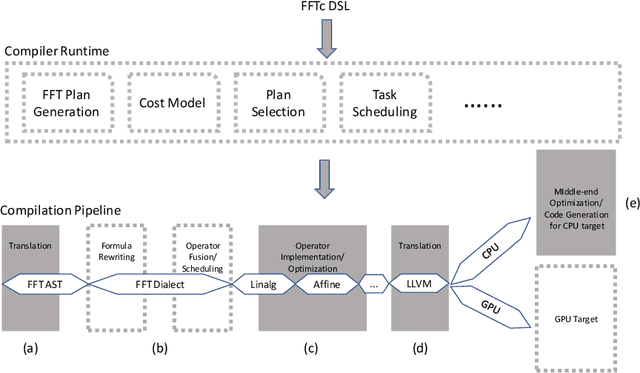
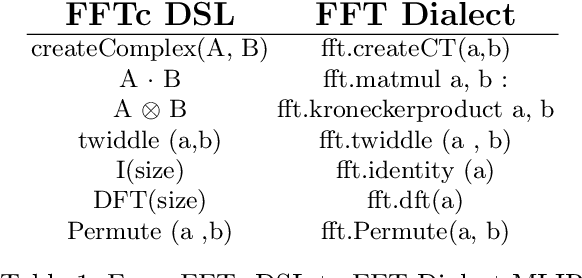
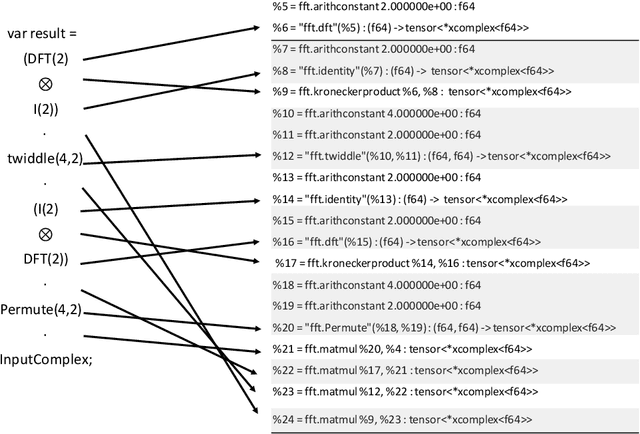
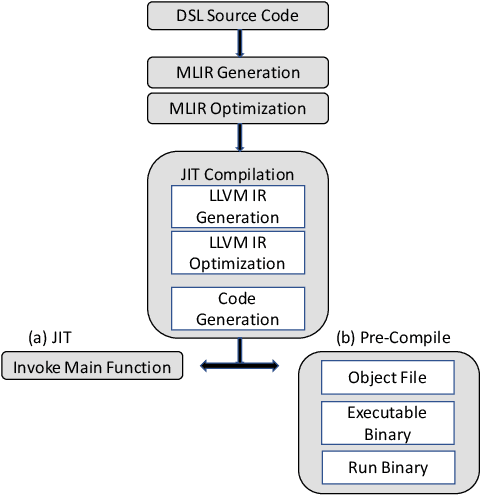
Abstract:Discrete Fourier Transform (DFT) libraries are one of the most critical software components for scientific computing. Inspired by FFTW, a widely used library for DFT HPC calculations, we apply compiler technologies for the development of HPC Fourier transform libraries. In this work, we introduce FFTc, a domain-specific language, based on Multi-Level Intermediate Representation (MLIR), for expressing Fourier Transform algorithms. We present the initial design, implementation, and preliminary results of FFTc.
Exploring Techniques for the Analysis of Spontaneous Asynchronicity in MPI-Parallel Applications
May 27, 2022


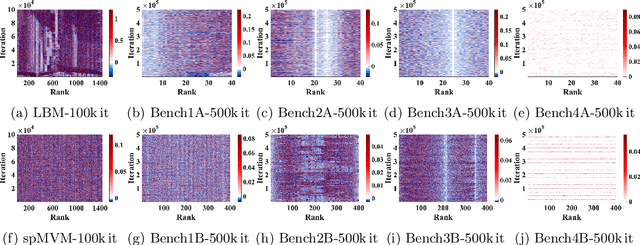
Abstract:This paper studies the utility of using data analytics and machine learning techniques for identifying, classifying, and characterizing the dynamics of large-scale parallel (MPI) programs. To this end, we run microbenchmarks and realistic proxy applications with the regular compute-communicate structure on two different supercomputing platforms and choose the per-process performance and MPI time per time step as relevant observables. Using principal component analysis, clustering techniques, correlation functions, and a new "phase space plot," we show how desynchronization patterns (or lack thereof) can be readily identified from a data set that is much smaller than a full MPI trace. Our methods also lead the way towards a more general classification of parallel program dynamics.
Higgs Boson Classification: Brain-inspired BCPNN Learning with StreamBrain
Aug 17, 2021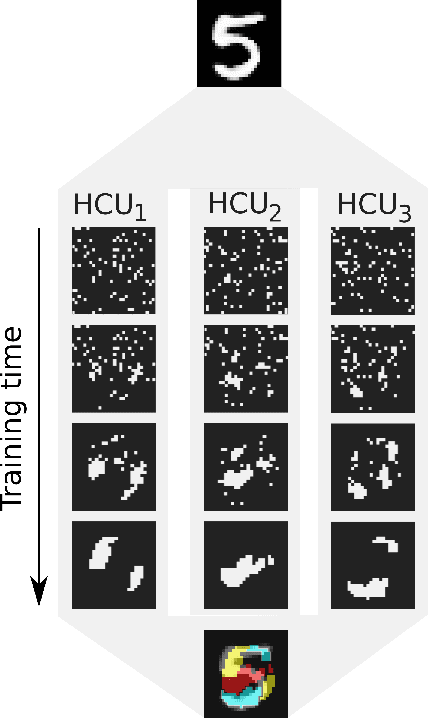
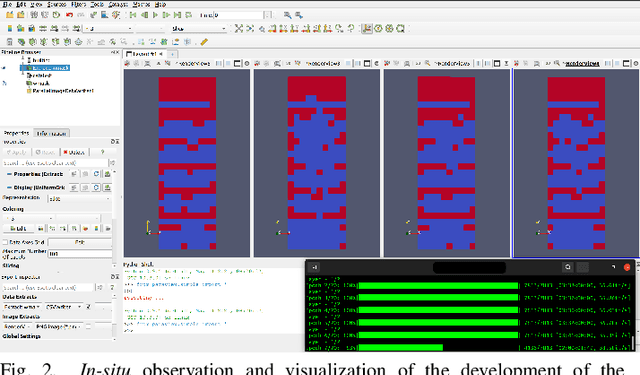
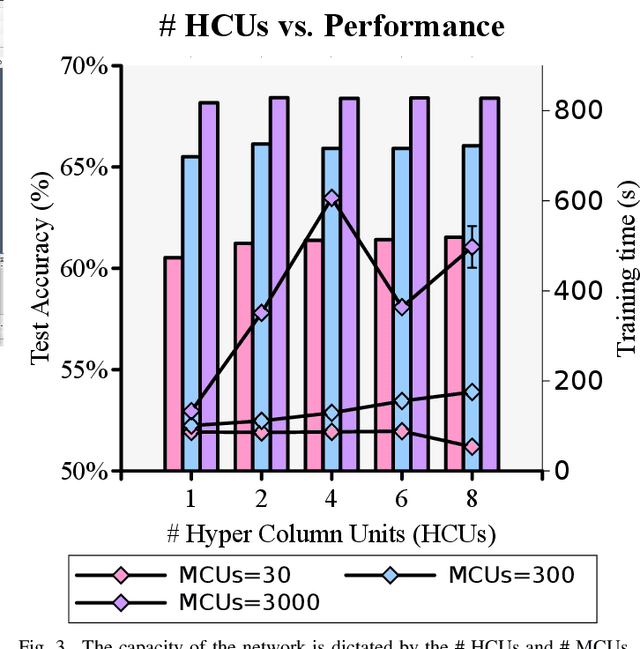
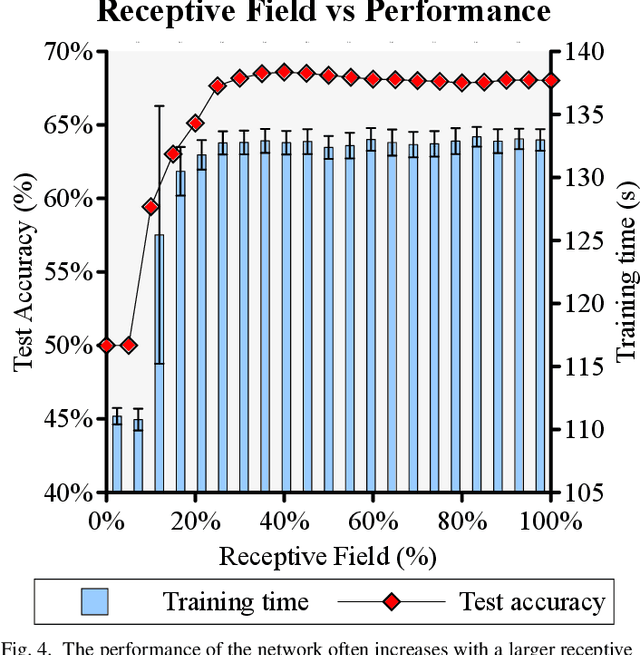
Abstract:One of the most promising approaches for data analysis and exploration of large data sets is Machine Learning techniques that are inspired by brain models. Such methods use alternative learning rules potentially more efficiently than established learning rules. In this work, we focus on the potential of brain-inspired ML for exploiting High-Performance Computing (HPC) resources to solve ML problems: we discuss the BCPNN and an HPC implementation, called StreamBrain, its computational cost, suitability to HPC systems. As an example, we use StreamBrain to analyze the Higgs Boson dataset from High Energy Physics and discriminate between background and signal classes in collisions of high-energy particle colliders. Overall, we reach up to 69.15% accuracy and 76.4% Area Under the Curve (AUC) performance.
A Deep Learning-Based Particle-in-Cell Method for Plasma Simulations
Jul 05, 2021



Abstract:We design and develop a new Particle-in-Cell (PIC) method for plasma simulations using Deep-Learning (DL) to calculate the electric field from the electron phase space. We train a Multilayer Perceptron (MLP) and a Convolutional Neural Network (CNN) to solve the two-stream instability test. We verify that the DL-based MLP PIC method produces the correct results using the two-stream instability: the DL-based PIC provides the expected growth rate of the two-stream instability. The DL-based PIC does not conserve the total energy and momentum. However, the DL-based PIC method is stable against the cold-beam instability, affecting traditional PIC methods. This work shows that integrating DL technologies into traditional computational methods is a viable approach for developing next-generation PIC algorithms.
 Add to Chrome
Add to Chrome Add to Firefox
Add to Firefox Add to Edge
Add to Edge